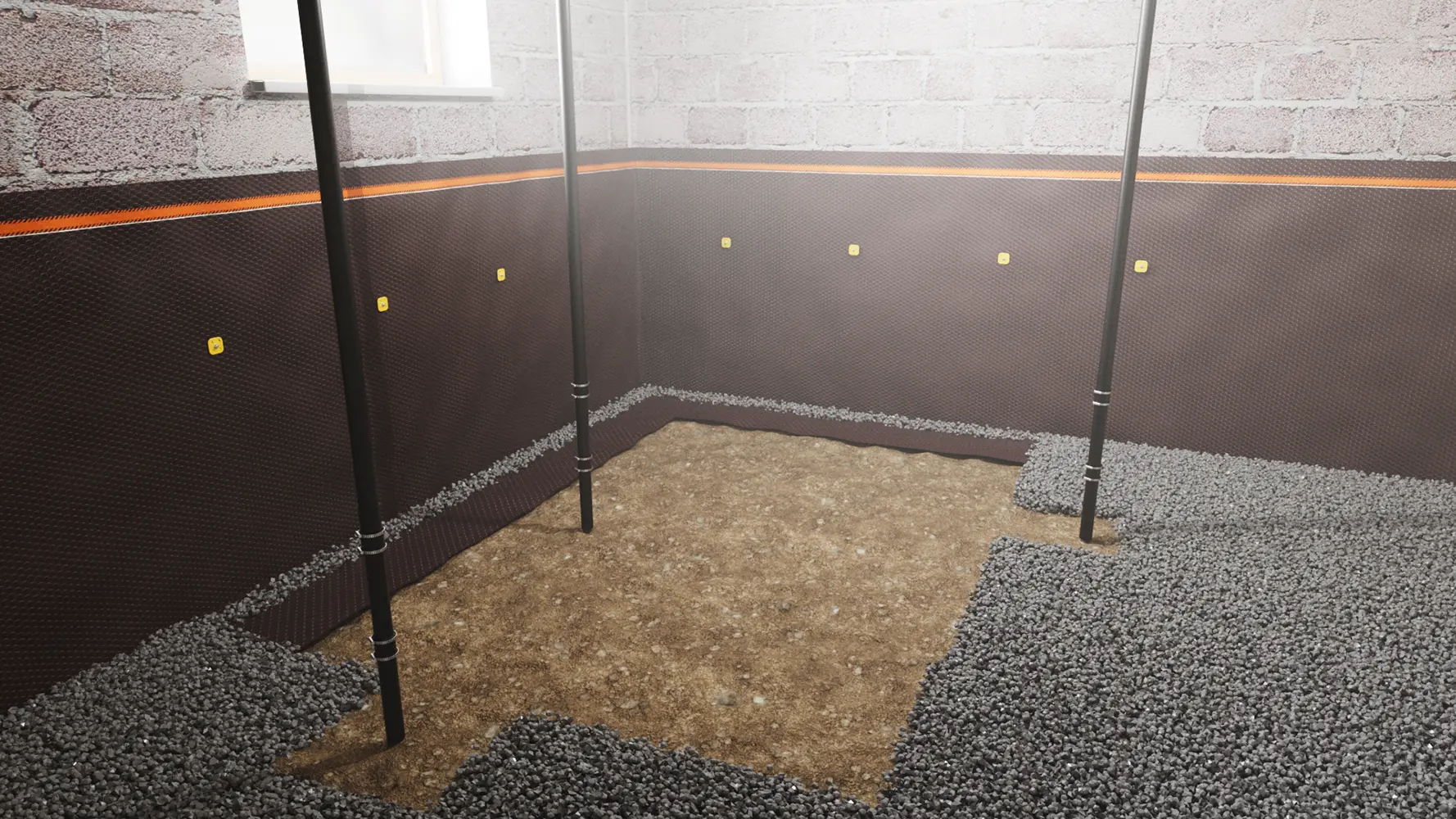For many homeowners, the basement is a place to store unwanted items. But what if you want to expand livable space without taking up additional space on your property? More space means more opportunities.
Your desire can be realized through underpinning! And no, it’s not a spell from a Harry Potter, but real engineering innovation.
Find out from the expert team at Quality Age Build the answers to the questions: What is underpinning a basement, and what is important to know for a successful project?
Alternative to Underpinning: Benching
Underpinning Toronto is a construction technique for reinforcing the crawl space foundation. It involves excavating soil under the room’s walls and then building a deeper foundation. This expands the usable space with a higher ceiling and allows for additional waterproofing if needed.
In contrast to this method of basement lowering, benching is a less destructive and more affordable option for strengthening the home’s foundation with minimal structural issues. How does it work?
A small area of soil is excavated near the foundation wall base. A concrete or steel bench is built alongside the excavated area, serving as a support wall for the existing foundation. Due to the smaller scale of work, benching is completed faster, but it is only suitable for basements with minor settlement issues or small cracks in the foundation walls.
Consulting a structural engineer will determine whether the benching alternative suits your case.
The Expenses Associated with Underpinning in Toronto
Underpinning in Toronto is a significant investment, but the exact cost varies depending on several factors. You can estimate the expenses by considering the following:
- Cost per square foot. The average cost of underpinning ranges from $80 to $350, depending on the complexity of the work, soil type, depth of groundwater, and other factors.
- Size and depth of the crawl space. As the area increases, the amount of materials and work volume increases, leading to a higher overall cost.
- Type of foundation and materials. The price is affected by the type of foundation you have (concrete, stone, brick, etc.) and the variety of materials used for the new foundation underpinning.
- Excessively moist, clayey, or rocky soils may require additional shoring or special drilling equipment, increasing costs.
- Labor costs. More experienced, qualified, licensed, and insured contractors typically charge more because they guarantee a better quality of work.
- Legal expenses. A government permit is required to start work. Applying for a permit requires submitting a drawing plan. On average, this costs around $3,500 in Toronto.
Estimated project cost
| Residential building | Commercial building |
| From $20,000 to $40,000 | $40,000+ |
Advantages of Underpinning Your Basement
What is underpinning basement? It’s the opportunity to modernize the space: make it waterproof or install radiant floor heating. However, not all homeowners rush to hire underpinning specialists. Why is that? Of course, implementing such a project costs a lot, but you should familiarize yourself with numerous advantages that you may not have known about.
No Added Measurable Square Footage with Underpinning
The measured area of a house is calculated based on its external dimensions. Underpinning only increases its internal space due to excavation into the ground. Therefore, while you gain more usable space in the crawl space, it will not be accounted for in the official measured area of the house. The additional square footage can be outfitted as a relaxation room or gym.
Cost-Effectiveness of Underpinning
At first glance, underpinning may seem like an expensive project. But compare it to the alternative – constructing a separate building on the property (such as a summer kitchen or a full-fledged cottage). Converting the crawl space into a living space is a more cost-effective option because you save on the expenses of building a roof and external walls.
Addressing Water Issues with Benching and Underpinning
Moisture and water leakage in the crawl space are common problems in old houses. During benching and underpinning, contractors level the soil, install a drainage system, and waterproof the delta foundation. This prevents water from entering, protecting the house from mold, fungus, and other moisture-related issues.
Enhanced Accessibility Through the Construction
Important engineering utilities (water supply, sewage, electrical cables, etc.) often run along the basement walls. Increased crawl space after underpinning simplifies access to them for inspection, maintenance, or repair. This can save time and money since there’s no need to demolish walls or a basement floor to reach them.
Increased Ceiling Height and Improved Overall Lighting
One of the main drawbacks of basements is their low ceiling, making them cramped and dark (as they were not previously used as living spaces). Underpinning allows for an increase in ceiling height, creating a more spacious room with better air circulation.
Reinforcement of the Original Foundation
Increased space is not the only benefit of basement underpinning. It also protects you from serious problems related to the structural integrity of the house. Over time, the original foundation weakens and settles, so underpinning strengthens and improves it during reinforcement work.
Underpinning: A Task Best Handled by Professionals
Dependence on the strength and reliability of the foundation determines the longevity and safety of the entire structure. Don’t want to see cracks on basement walls, floor sagging, or tilts? Then, entrust underpinning to professionals. Thanks to years of experience, they will carefully plan the underpinning process and be able to properly carry out reinforcement, concreting, waterproofing, and more.
Why turn to specialists?
- Experience and knowledge
- Accurate calculations
- Drawing preparation
- Adherence to construction principles
- Safety guarantee
- Insurance and license
- Use of reliable equipment
Don’t chase total economy if you don’t want to do repairs again in a few years!
Conclusion
Crawl space is valuable and can be used more efficiently than as a place to store junk. However, before doing so, make sure the premises are suitable—whether the ceiling height is adequate, there are no cracks or sagging, and there is no risk of flooding.
Underpinning Basement is an effective way to strengthen and stabilize the foundation by excavating and installing piles or beams. If you notice any foundation problems, don’t risk it—contact Quality Age Build. We will tell you how to underpin a basement to make it your favorite place in the house and provide the best foundation services in Toronto.
Timely underpinning is savings in the long run!
Contact us
Quality Age Build Inc is at your service across the GTA. Request a quote today and ensure your property is in expert hands.
Related Services
Pair our expert guidance with our underpinning services to stabilize shifting soils, strengthen your foundation, and ensure lasting structural support.
FAQs
What is the purpose of basement underpinning?
Basement underpinning serves two main purposes. On one hand, it’s a great way to expand the living space, as you can arrange an additional room in the crawl space. On the other hand, basement underpinning strengthens and updates it, making the house more resistant to sagging and other issues.
When is basement underpinning recommended or necessary for a property?
Basement underpinning is recommended if you:
- Notice cracks in the foundation or basement walls.
- Want to increase the livable space of the house through the crawl space.
- Plan to reconstruct the basement to add additional ceiling height.
- Notice that the basement floor is sagging or uneven.
What are the key steps involved in the basement underpinning process?
The Quality Age Build team in the basement underpinning process performs the following tasks:
- Inspection of your basement and foundation to determine the scope of work and develop a plan.
- Preparation of the work area: installation of temporary drainage systems for groundwater and rainwater diversion, implementation of safety measures at the construction site.
- Water diversion and safety assurance.
- Excavation – digging soil around the foundation of the crawl space.
- Installation of a new foundation, lower than the existing one, and connecting them for structural integrity.
- Completion of work – backfilling soil and cleaning the area.
The specifics of the stages may vary as we approach each project individually.

